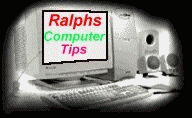Signals
The serial port was first designed for modems, that's why many signals are refering to modem signals.
Manufacturers can use these signals as they want, so you'll have to look for how they used them before trying to control their devices.
DCD (Data Carrier Detect) active high input
Connection established with the other computer.
RX (Receive Data) input
Data input from the device.
TX (Transmit Data) output
Data output to the device.
DTR (Data Terminal Ready) active high output
Tells the other computer that the port is ready to receive data.
DSR (Data Set Ready) active high input
Tells that the other computer have data ready to be send.
RTS (Ready To Send) active high output
Tells the other computer that you want to send data.
CTS (Clear To Send) active high input
Tells that the other computer is ready to send data.
RI (Ring Indicator) active high input
Tells that another computer want to start a connection.
Note: RS232 signals are 0V to 12V.
| 